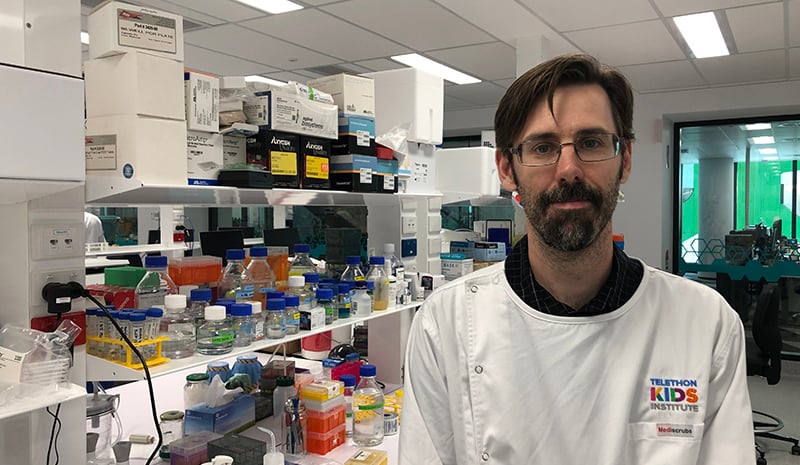Six out of ten ‘nicotine-free’ e-cigarette liquids analysed by The Kids Research Institute Australia researchers contained nicotine as well as an acutely toxic chemical typically found in pesticides and disinfectants, according to research published today in the Medical Journal of Australia (see report).
A team led by Associate Professor Alexander Larcombe, Head of Respiratory and Environmental Health at The Kids and part of the School of Public Health at Curtin University, had an independent commercial laboratory test the ten e-liquids.
The liquids had been purchased on-line and over-the-counter in Australia, and all had been labelled ‘nicotine-free’. Six samples were found to have nicotine in them, while all ten samples were found to contain 2-chlorophenol – a chemical used in insecticides, herbicides and disinfectants.
“The presence of 2-chlorophenol was a surprise,” Associate Professor Larcombe said. “It’s classified as acutely toxic by the Globally Harmonized System of Classification and Labelling of Chemicals and is also known to be a respiratory and dermal irritant.”
Associate Professor Larcombe said the 2-chlorophenol may have come from residue of pesticides used on plants grown to make glycerine – a main e-liquid excipient. Excipients are largely inactive substances that serve as a filler or medium for other substances.
The nicotine found in three of the samples was at levels comparable to those found in low-dose nicotine e-liquids; and at trace levels in the other three samples in which it was present.
“We also found other things – by-products of animal or human bodily functions – which indicates the process of making the e-liquids might not be as clean as you might hope,” Associate Professor Larcombe said.
“For example, 2-Amino-octanoic acid is a metabolite occasionally found in mammalian blood, urine and faeces. Its presence may indicate contamination by biological substances during manufacture.”
The analyses also found chemicals commonly used in foodstuffs, soaps and other detergents; as well as flavours, flavouring precursors, or solvents which were common e-liquid ingredients.
Associate Professor Larcombe said these ingredients were regarded as relatively benign for humans, however it was not known how such chemicals may affect health when heated, aerosolised and inhaled during e-cigarette usage.
“Most of those sorts of things are food additives qualified as ‘safe to eat’, but the way e-cigarettes work is the liquid is heated to 200-250 degrees – and it’s unknown what that heating process does to the chemical composition of these ingredients, especially when it’s being breathed into the lungs,” he said.
Associate Professor Larcombe said although it was illegal to sell e-liquids containing nicotine in Australia, there was little to no regulation of their manufacture.
“The real take home message here is that people are buying these liquids unaware of what’s in them, and there’s no way they can tell based on what the label says,” he said.
The research, which received funding from the Australian Competition and Consumer Commission, Health Department of Western Australia and the National Health and Medical Research Council, was a collaboration between The Kids Research Institute Australia, Curtin University and The University of Western Australia.

